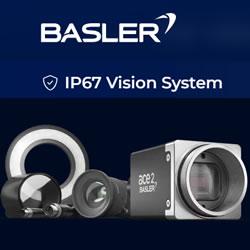Liquid Hydrogen-Fueled UAV Completes Record Flight Time
Researchers at the U.S. Naval Research Laboratory flew their fuel cell powered Ion Tiger unmanned aerial vehicle (UAV) for 48 hours and 1 minute, April 16 to 18, by using liquid hydrogen (LH2) fuel in a new, NRL-developed, cryogenic fuel storage tank and delivery system.
This flight shatters their previous record of 26 hours and 2 minutes set in 2009 using the same vehicle, but with gaseous hydrogen stored at 5,000 pounds per square inch (psi).
Liquid hydrogen is three times denser than compressed hydrogen. The cryogenic liquid is stored in a lightweight tank, allowing more hydrogen to be carried onboard to increase flight endurance. Success in flight requires developing a high quality, lightweight insulated flight Dewar for the cryogenic fuel, plus matching the boil off of the cryogenic hydrogen to the vehicle fuel consumption.
"Liquid hydrogen coupled with fuel-cell technology has the potential to expand the utility of small unmanned systems by greatly increasing endurance while still affording all the benefits of electric propulsion," said Dr. Karen Swider-Lyons, NRL principal investigator.
Although long endurance is possible with conventional, hydrocarbon-fueled systems, these are usually loud, inefficient, and unreliable in this aircraft class. Similarly, small, electric, battery-powered systems are limited to endurances of only several hours.
To address the logistics of in-theater supply of liquid or gaseous hydrogen, NRL proposes in-situ manufacture of LH2 for use as fuel. An electrolyzer-based system would require only water for feedstock and electricity, possibly from solar or wind, to electrolyze, compress and refrigerate the fuel.
The NRL LH2 flight capability is being developed by NRL's Tactical Electronic Warfare and Chemistry Divisions, and is sponsored by the Office of Naval Research.
http://www.nrl.navy.mil/
Featured Product

Basler 3D Vision Solutions for Robotics and Warehouse Automation
Empower your robot's vision: with our 3D cameras and tailored robotics application software, your robot can tackle any task. From bin picking to sorting and navigation, AI enables your robot to recognize even "unseen" objects in mixed scenarios. Explore our time-of-flight and stereo cameras for vision-guided robotics with a wide range of compatible accessories."
